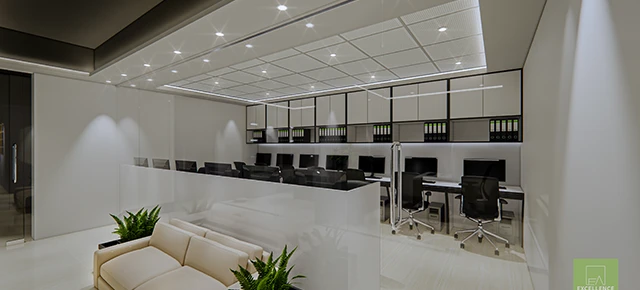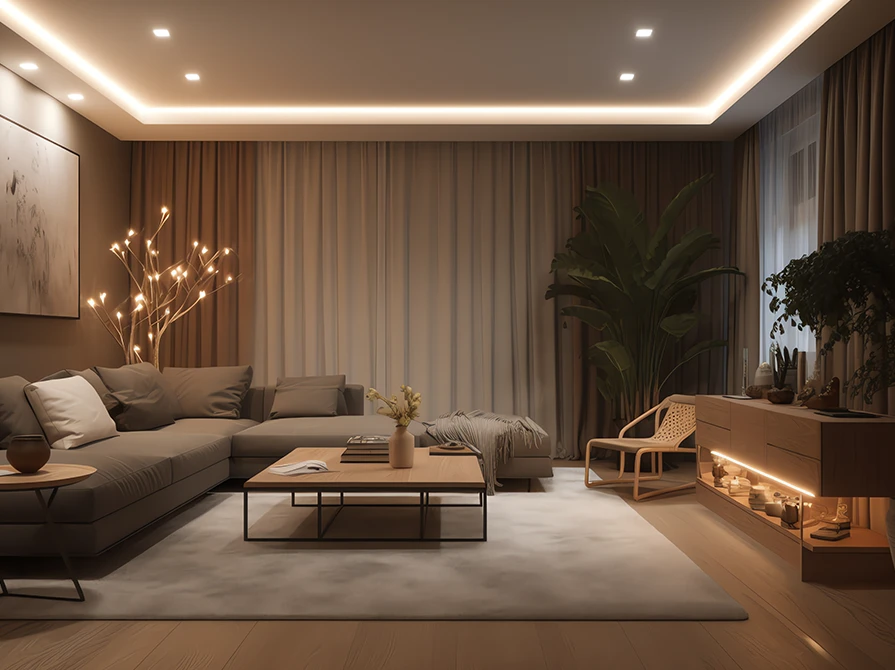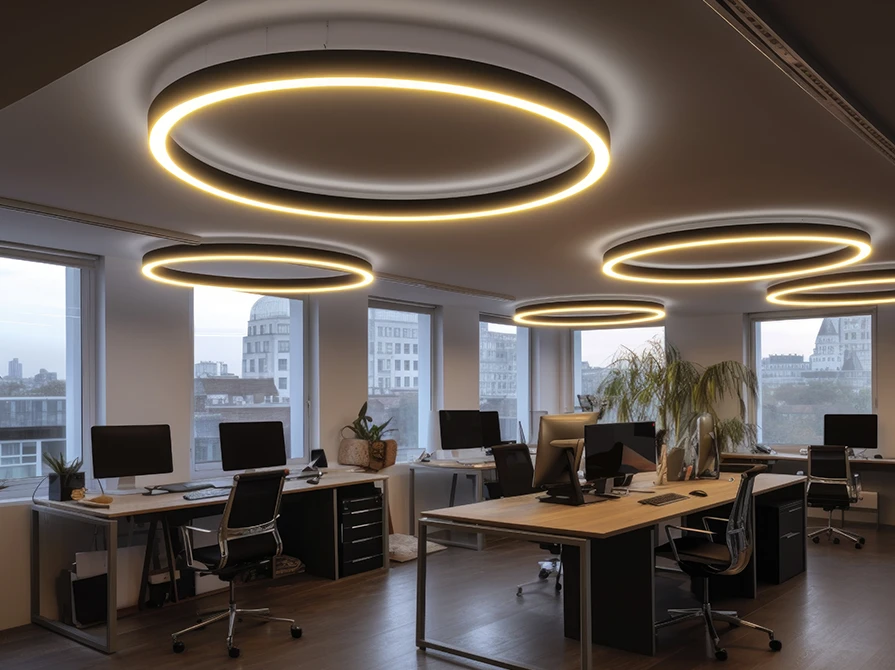


In the realm of modern workspaces, effective lighting design plays a critical role in ensuring comfort, productivity, and overall well-being. One of the most pressing challenges in achieving optimal lighting is controlling glare, which can cause discomfort, reduce productivity, and even lead to long-term vision problems. This blog explores various strategies for implementing glare-free lighting in contemporary office environments.
Glare occurs when there is a significant contrast between bright and dark areas, leading to discomfort and difficulty in seeing clearly. It can be direct, from a light source, or reflected, from surfaces like computer screens or glossy tables. Glare can lead to visual discomfort, headaches, and increased strain, which negatively impacts employee productivity and satisfaction.
Glare-free lighting is essential for creating a comfortable and efficient workspace. By reducing glare, employees can focus better, experience less eye strain, and work more comfortably for extended periods. This leads to higher productivity, improved job satisfaction, and better overall health outcomes for employees.
1. Utilize Indirect Lighting
Indirect lighting involves reflecting light off ceilings or walls to diffuse illumination throughout the room. This method reduces direct exposure to light sources and minimizes glare. Indirect lighting provides a softer, more evenly distributed light that enhances visual comfort without harsh shadows.
2. Employ Task Lighting
Task lighting provides focused illumination for specific activities, reducing the need for excessive overhead lighting and minimizing glare. This type of lighting ensures that workspaces have adequate light levels for tasks while avoiding the discomfort of bright, direct light.
3. Opt for Diffused Light Sources
Diffused light sources spread light evenly and reduce harsh contrasts that contribute to glare. Fixtures with diffusers, frosted glass, or light shades can help achieve this effect, creating a more comfortable visual environment.
4. Adjust Lighting Levels
Controlling the intensity of lighting can significantly reduce glare. Adjustable lighting systems, such as dimmable fixtures and automated controls, allow for the customization of light levels based on the time of day, task requirements, and individual preferences.
5. Optimize Fixture Placement
The placement of lighting fixtures plays a crucial role in minimizing glare. Proper positioning ensures that light sources do not create reflections on screens or cause direct glare in the line of sight.
6. Incorporate Anti-Glare Accessories
Anti-glare accessories, such as filters, screens, and shades, can be added to existing lighting systems to mitigate glare. These accessories are particularly useful in workspaces with unavoidable light sources that contribute to glare.
7. Leverage Natural Light Effectively
Natural light is essential for a healthy and pleasant work environment, but it needs to be managed carefully to prevent glare. Using architectural elements and window treatments, you can harness natural light while minimizing its negative effects.
Smart lighting systems can be programmed to adjust light levels and color temperatures throughout the day, reducing glare and enhancing visual comfort. These systems can integrate with sensors to dynamically respond to changes in natural light and occupancy.
Human-centric lighting systems are designed to support human well-being by mimicking natural light patterns. These systems can adjust the intensity and color temperature of light to align with circadian rhythms, reducing glare and promoting comfort.
LED technology offers numerous benefits, including energy efficiency, long lifespan, and reduced glare. Advanced LED fixtures are designed with features like anti-glare lenses and diffusers to provide comfortable illumination.
Implementing glare-free lighting solutions in modern workspaces offers numerous benefits:
In the quest to create modern workspaces that are both comfortable and productive, addressing the challenge of glare is paramount. By employing a combination of indirect lighting, task lighting, diffused light sources, adjustable lighting levels, strategic fixture placement, and advanced technologies, it is possible to design environments that support the well-being and efficiency of employees. Implementing these strategies not only enhances visual comfort but also contributes to a healthier, more productive, and aesthetically pleasing workspace. As we continue to evolve our understanding of lighting design, the pursuit of glare-free excellence remains a fundamental goal in the creation of optimal work environments. Get in touch with us to know more about our glare-free lighting solutions.







